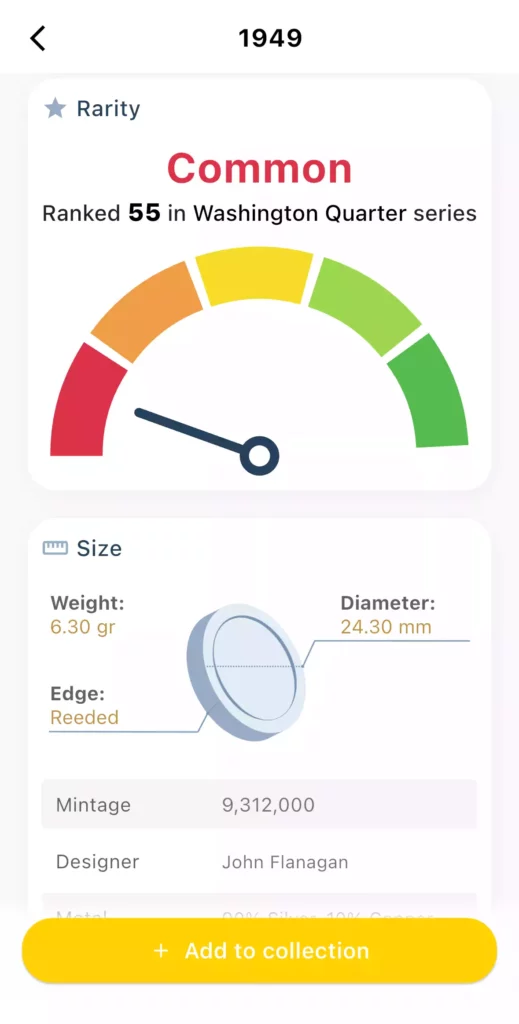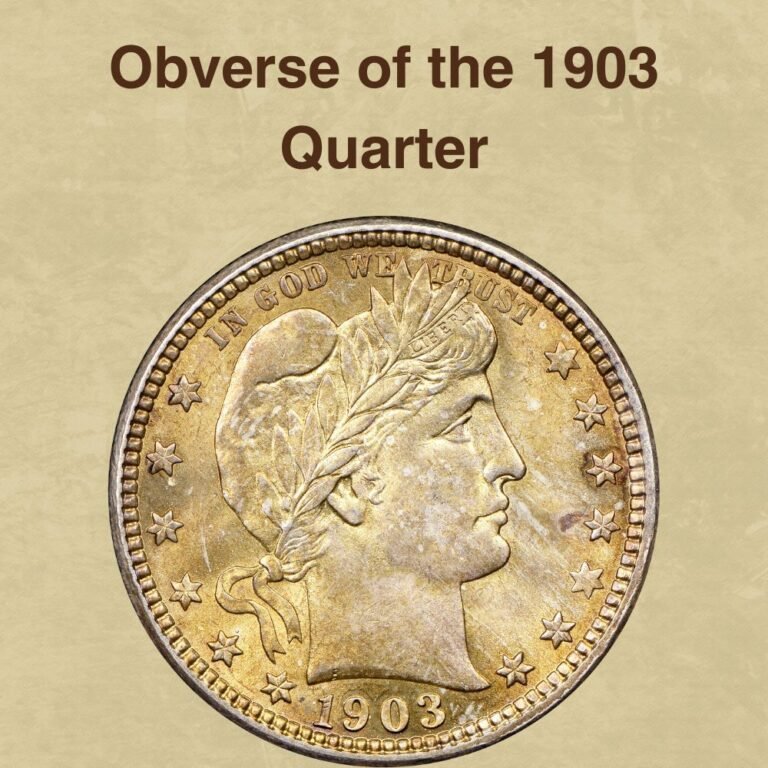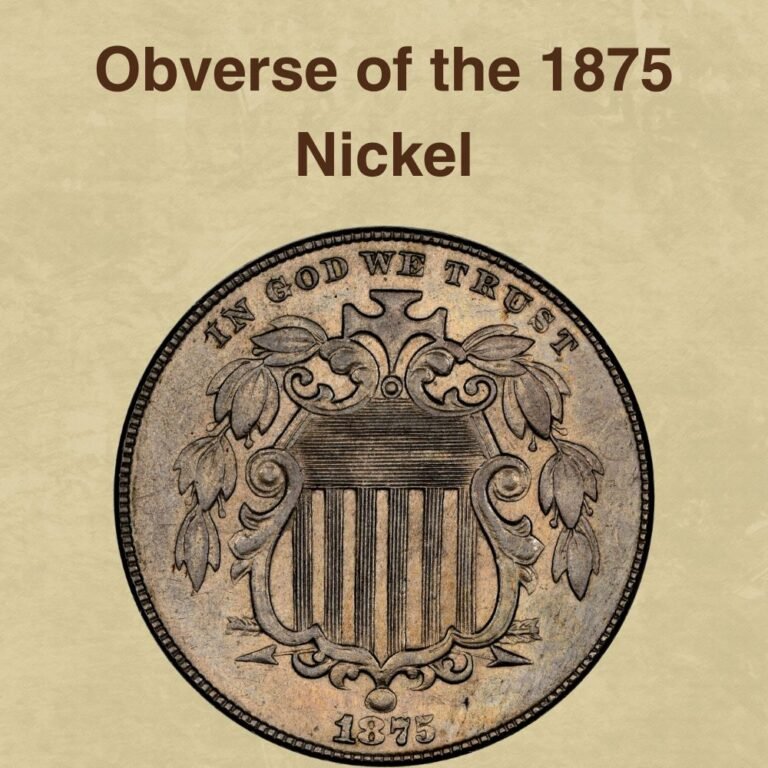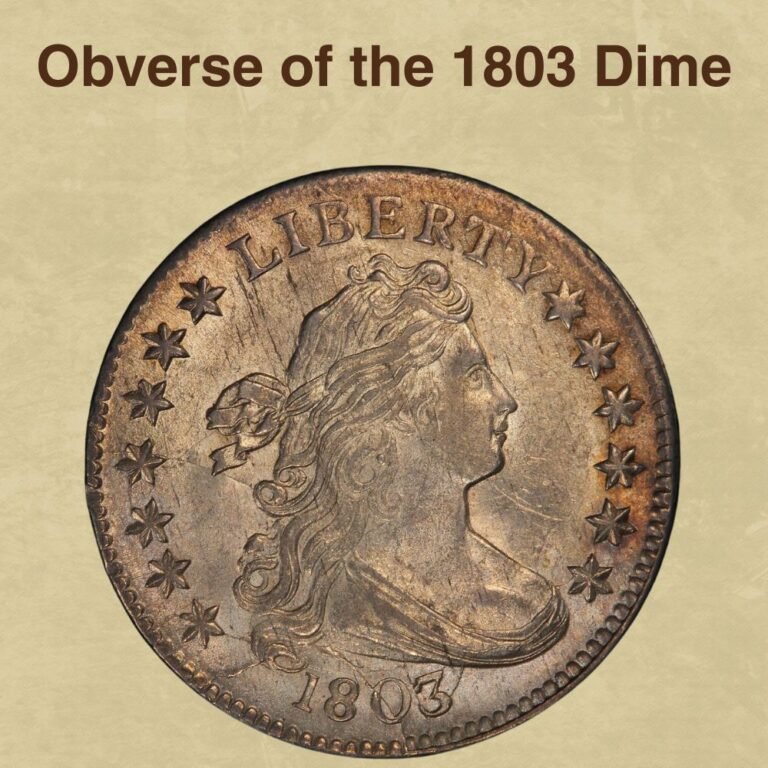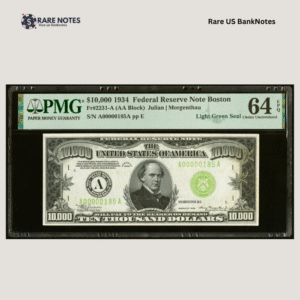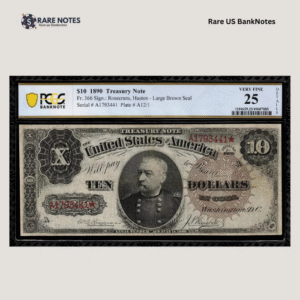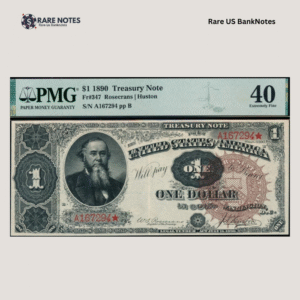I analyzed thousands of 1949 Washington Quarter auction records and market data to understand what makes these post-war coins valuable. The results revealed some fascinating patterns that might surprise collectors.
For instance, one of my most intriguing discoveries is that 1949-D quarters in top grades can command prices nearly 30 times higher than typical circulated examples – a premium that reflects their extreme scarcity in mint condition.
In this comprehensive analysis, I examine the key factors driving 1949 Washington Quarter values, from the Philadelphia and Denver mint varieties to condition rarity.
Whether you’re a seasoned collector or just discovered a 1949 quarter in your pocket change, this data will help you understand exactly what your coin might be worth in today’s market.
1949 Quarter Value By Variety
The 1949 Washington Quarter comes in two distinct varieties: the Philadelphia mint (no mintmark) and Denver mint (D mintmark), each with significantly different values based on mintage and surviving condition.
1949 Quarter Value Chart
| TYPE | GOOD | FINE | AU | MS | PR |
|---|---|---|---|---|---|
| 1949 No Mint Mark Quarter Value | $7 | $8 | $14 | $556 | — |
| 1949-D Quarter Value | $6 | $7 | $10 | $1,505 | — |
Tip: Use our CoinValueChecker App for real-time variety identification and current market values.
1949 Quarter Market Trend
Market Interest Trend Chart – 1949 Quarter
The market interest trend for 1949 Washington Quarters reveals a fascinating collector journey spanning nearly a decade. The data shows dramatic peaks around 2018-2019, when collector enthusiasm reached extraordinary heights before experiencing a sharp decline.
Following this intense period, interest stabilized at more moderate levels from 2020 onwards, maintaining consistent but subdued collector engagement through 2025.
This pattern mirrors broader numismatic market cycles, where certain coin series experience periods of intense speculation followed by market correction and stabilization. The 1949 quarter’s trend demonstrates the volatile nature of collector interest, particularly for post-war silver coins that experienced renewed attention during precious metals market fluctuations.
The recent stabilization suggests the coin has found its natural collector base, with steady but measured interest replacing the earlier speculative fervor. This trend pattern is characteristic of many mid-20th century coins that went through similar market cycles.
To see how the 1949 Washington Quarter compares against other collectible coins and understand broader market patterns, explore our comprehensive US Coin Market Trend Ranking (Top 100) analysis.
History of the 1949 Quarter
The 1949 Washington Quarter represents a pivotal moment in American numismatic history, marking the post-World War II economic recovery and the return to peacetime coinage production.
By 1949, the United States Mint had fully resumed normal operations after the wartime disruptions that had affected coin production throughout the 1940s. This year saw the continuation of the beloved Washington Quarter design, first introduced in 1932 to commemorate George Washington’s 200th birthday.
The 1949 quarters were struck at two facilities: the Philadelphia Mint, which produced coins without mintmarks, and the Denver Mint, identifiable by the small “D” mintmark on the reverse. Both varieties maintained the classic 90% silver composition that had been standard since the series’ inception.
The coins featured John Flanagan’s iconic obverse design of Washington’s profile and the heraldic eagle reverse that collectors cherish today.
Production levels in 1949 reflected America’s growing post-war prosperity, with millions of quarters needed for expanding commerce. However, the surviving population in high grades remains remarkably scarce, making pristine examples highly sought after by collectors who appreciate both the historical significance and the inherent beauty of these early post-war silver quarters.
Is your 1949 Quarter rare?
1949 No Mint Mark Quarter
1949 D Quarter
Both 1949 Washington Quarter varieties demonstrate impressive scarcity within the Washington Quarter series, with rarity scores that place them among the more challenging dates to find in high grades.
The Philadelphia mint quarter (no mintmark) achieves a rarity score of 32 and ranks 55th among all Washington Quarter issues, while the Denver mint variety scores 30 and holds the 66th position.
These closely matched scarcity ratings reflect similar survival rates despite different original mintages, indicating that both varieties faced comparable attrition rates over the decades.
The “Scarce” designation for both coins underscores their appeal to serious collectors who appreciate the difficulty of locating quality examples. While not among the absolute key dates of the series, these 1949 quarters represent solid collecting opportunities for those building complete Washington Quarter sets.
The relatively close rarity scores suggest that collectors should expect similar premiums and availability challenges when pursuing either variety.
For a comprehensive overview of how these 1949 quarters compare to other challenging dates, explore our complete Washington Quarter Key Dates (Rarity Ranking) analysis. Use our CoinValueChecker app to instantly assess the rarity and current market value of your 1949 Washington quarters.

Key Features of the 1949 Quarter
John Flanagan’s Washington quarter design continued into its tenth year of production in 1942. During this wartime period, three mints operated at full capacity to meet economic demands. The Philadelphia, Denver, and San Francisco facilities each produced quarters with consistent design elements, while a special proof version was also struck for collectors.
The obverse of the 1949 quarter

The obverse of the 1949 quarter features the classic Washington portrait designed by John Flanagan, depicting George Washington in left-facing profile. The inscription “UNITED STATES OF AMERICA” curves along the top rim, while “QUARTER DOLLAR” appears at the bottom. “LIBERTY” is inscribed on the left side, with the mint year “1949” positioned on the right side of Washington’s portrait.
The reverse of the 1949 quarter

The reverse displays a heraldic eagle with outstretched wings, clutching arrows in its left talon and an olive branch in its right. Above the eagle appears “UNITED STATES OF AMERICA” in an arc, while “E PLURIBUS UNUM” (Out of Many, One) is inscribed on a banner held in the eagle’s beak. “QUARTER DOLLAR” is positioned at the bottom of the design.
Other features of the 1949 quarter
The 1949 quarter was minted in 90% silver and 10% copper, weighing 6.25 grams with a diameter of 24.3mm. It features a reeded edge with 119 ridges. Minted in Philadelphia (no mint mark), Denver (D), and San Francisco (S), with mint marks located on the reverse below the eagle. This was part of the final years of silver quarter production before the 1965 composition change.
1949 Quarter Mintage & Survival Data
1949 Quarter Mintage & Survival Chart
Survival Distribution
| Type | Mintage | Survival | Survival Rate |
|---|---|---|---|
| No Mint | 9,312,000 | 930,000 | 9.9871% |
| D | 10,068,400 | 1,000,000 | 9.9321% |
The 1949 Washington quarter was produced at two mint facilities with substantial mintages totaling over 19.3 million coins.
The Denver Mint (D) produced the higher quantity at 10,068,400 pieces, while the Philadelphia Mint (no mint mark) struck 9,312,000 quarters. Despite the Denver mint’s higher production, both varieties show remarkably similar survival rates of approximately 10%.
The Philadelphia issue has a slightly better survival rate at 9.9871% with an estimated 930,000 coins remaining, compared to the Denver mint’s 9.9321% survival rate with about 1,000,000 surviving pieces.
The survival distribution shows an almost even split between the two varieties, with the Denver mint accounting for a marginally larger portion of surviving coins. These survival statistics place both 1949 quarter varieties among the more commonly available Washington quarters from the 1940s era, making them accessible options for collectors seeking high-grade examples from this silver quarter series.
For a comprehensive comparison of how the 1949 quarter ranks against other Washington quarters in terms of rarity and survival, explore our Washington Quarter Survival Ranking (Top 100) to discover which dates offer the best collecting opportunities.
1949 Quarter Grading
Grading 1949 Washington quarters requires careful examination of key design elements and wear patterns typical of this silver era. The coin’s condition significantly impacts its collector value, with higher grades commanding substantial premiums over circulated examples.
Critical areas to assess include Washington’s hair details, cheek definition, and the sharpness of facial features on the obverse. On the reverse, focus on the eagle’s feathers, particularly those on the breast and wings, along with the clarity of the olive branch leaves and arrow details.
Common wear points appear first on Washington’s cheekbone and hair waves, while the eagle’s breast feathers show initial signs of circulation. Mint luster preservation is crucial for uncirculated grades, and original toning can enhance a coin’s appeal. Surface marks, scratches, and cleaning evidence will lower the grade significantly.
For accurate assessment, you can quickly check your coin’s grade using our CoinValueChecker App for instant professional evaluation.

Understanding proper grading techniques is essential for any Washington quarter collector. To master the nuances of evaluating these iconic coins and maximize your collecting success, learn more through our comprehensive guide: How to Grade Washington Quarters.
1949 Quarter Value Guides
1949 Quarter Varieties:
- 1949 Washington Quarter (No Mint Mark) – Philadelphia Mint
- 1949-D Washington Quarter – Denver Mint
The 1949 Washington quarter was produced at two U.S. Mint facilities, creating distinct varieties for collectors. The Philadelphia Mint produced the base issue without a mint mark, while Denver added its “D” mint mark below the eagle on the reverse.
Each variety has different mintage figures and availability in the collector market, with the Denver mint producing a slightly higher quantity at over 10 million pieces compared to Philadelphia’s 9.3 million.
Both varieties share the same silver composition and design features, with the mint mark being the primary distinguishing characteristic for identification and valuation purposes. These two varieties offer collectors accessible options from the post-World War II era of Washington quarter production.
1949 No Mint Mark Quarter Value

The 1949 Philadelphia quarter holds particular significance as one of the final silver Washington quarters before the composition change in 1965. What makes this issue especially noteworthy is its dramatic price appreciation curve, remaining relatively affordable through most circulated and lower uncirculated grades before experiencing an exponential price jump at the highest preservation levels.
This pricing pattern reflects the rarity of pristine examples, as most survivors show typical wear from circulation. The coin’s 90% silver content adds intrinsic value beyond its numismatic worth, making it appealing to both collectors and precious metal investors. Despite its substantial original mintage of over 9.3 million pieces, finding gem-quality specimens remains challenging for collectors.
1949 No Mint Mark Price/Grade Chart
Price by 1-70 Grade (Latest Auction Records Included)


